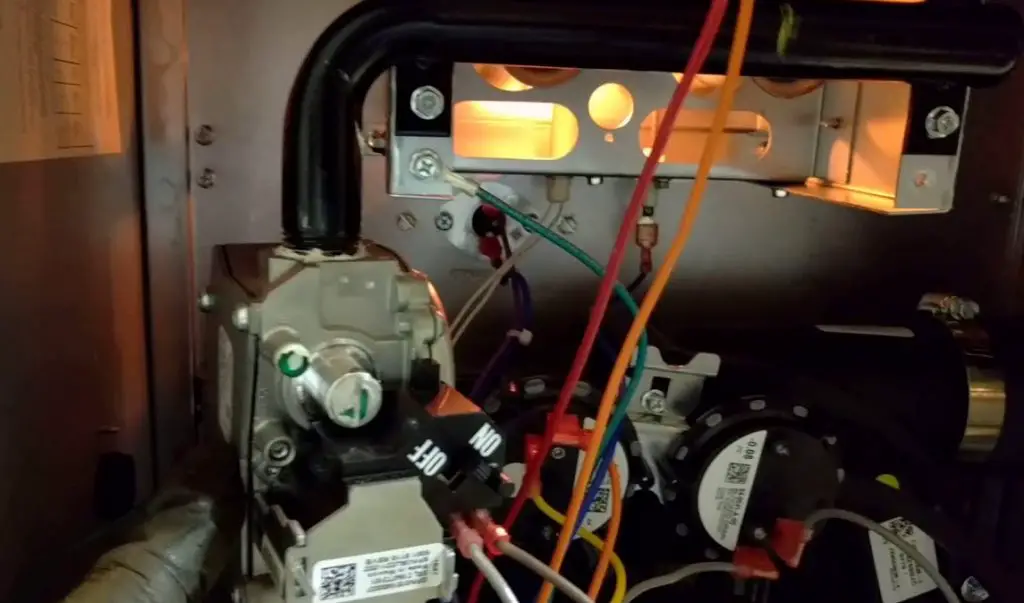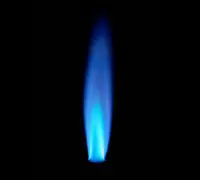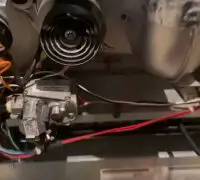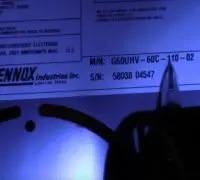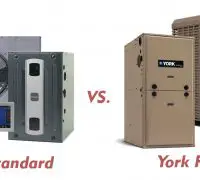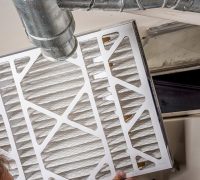If you're looking to fix or replace your Heating or A/C system, we can connect you with a reliable and cost-effective professional in your area.
Have you noticed that your Goodman furnace won’t stay lit, even if it starts up? Does it do it several times and then shuts down completely? If so, you most likely deal with most homeowners deal with every year: a dirty flame sensor.
Most service jobs on furnaces are sophisticated, and only professionals can address the problems, but that’s not the case with a dirty flame sensor. As a matter of fact, it’s rather simple to figure out which is the main cause for this sort of problem.
Page Table of Contents
What’s the flame sensor, and what’s its role for the furnace?
The flame sensor is an essential device placed at the burner. It looks like a thin, metallic rod (typically bent) placed in front of the flame stream inside your furnace.
The flame sensor is supposed to announce the furnace that gas is present whenever the gas valve becomes open. Should the furnace keep releasing gas even if there’s nothing to ignite it, the unburned gas may buildup and cause damage. As the furnace operates and the burner ignites, the flame sensor doesn’t have a lot of time for recognizing when there is a flame.
If the sensor isn’t capable of recognizing the flame, it will shut down the furnace on its own. Most models will permit the shutdown three times before switching to a “safety lockout” for an hour before attempting once again. Not being able to heat the house isn’t the worst part (it can be, mostly when it happens in the middle of the night). Still, your attempts to start the furnace without running the flame sensor will wear and tear the other components, reducing the furnace’s durability and performance.
Why does the flame sensor become dirty?
The flame sensor can go bad; however, it’s not broken, but it’s just dirty from the carbon buildup.
As the flame sensor is susceptible to the reading variations, even the tiniest coating of carbon may lead to misread and shut down. It’s also common for the furnace to be placed in the attic, basement, laundry room, or any other areas with a lot of dust in the air. The particles will stick to the sensor, burn onto it, and generate the carbon buildup.
Is it complicated to clean the flame sensor?
You will need several things for cleaning the flame sensor:
- Dry, clean paper towel
- ¼” hex driver or wrench. You need a tool for the specific kind of mounting screw you have
- Some light grit sandpaper, emery cloth, or steel wool
Here’s how you should clean the flame sensor:
Shut off the power to your furnace
Every time you intend to work on the furnace or any other appliance in your house, the first step to take is turning the power to it off. Remember that turning off the thermostat (temperature control) will not turn the power off to the furnace.
Typically, a toggle switch (it’s an on-off switch similar to light switches) placed on or close to the unit is what you have to turn off. You should turn off the furnace right from the circuit breaker box if it doesn’t come with its own switch. Your furnace should be mounted with a designated breaker so that it’s easier to shut it down.
When the gas valve doesn’t have electric control, you will also have to shut off the gas to the furnace before addressing the issue.
Put the flame sensor aside.
It’s relatively effortless to access the sensor, typically installed with a ¼” hex head screw. After removing the screw, the sensor will most likely slide out to where you may effortlessly clean it. Make sure to handle the sensor carefully. In some cases, you will also have to disconnect the cable from the sensor’s end to gain more space to work.
Clean the sensor
Use some light grain sandpaper, steel wool, and a wire brush for cleaning. Use it for gently rubbing the metal rod. Keep in mind that it’s not like sanding down a rusty car; you only try to eliminate the buildup and grit from the sensor. Always work gently and don’t overdo it. Once you’ve removed the grit, use a paper towel or a soft cloth for wiping it down.
Put the sensor back on.
Now that the sensor is clean, you may reconnect the wire and mount the sensor back on the burner with the ¼” screw. Put the door of the furnace back on and turn the power on.
Give it a test
It can take a couple of seconds until the furnace starts, but the fan will kick in and run for a bit almost instantly. After you’ve shut down the furnace, it may reset, so it will go through several series of tests before firing once again. Once it completes the checking, the furnace should usually start, turning off and on the way the thermostat is commanding. You should make sure that once the furnace starts, it remains that way at least once before being optimistic about solving the problem.
When should you replace the flame sensor?
If you’ve cleaned the flame sensor, but the furnace still doesn’t start, the sensor could be broken. You will have to replace it. You don’t sand the flame sensor, but you still have to remove the old sensor and install the new sensor instead. Should the furnace start, another factor, more complicated, could cause it. Electrical testing would give the solution, or at least narrow it down. Pressure switch, limit switch, and circuit board could also cause the problem.
You should check with the local Goodman supplier for getting the new flame sensor; it’s not something to find in any local hardware store. And if the new sensor gets dirty very fast, the furnace’s location could be the problem. A laundry facility close to your furnace may generate lint, which will float, burn, build dust on the new sensor and make the furnace not stay on once again.
We can definitely connect you with a trusted provider in your area to repair, replace or maintain your heating and A/C systems. Why not let us find a professional for you?
